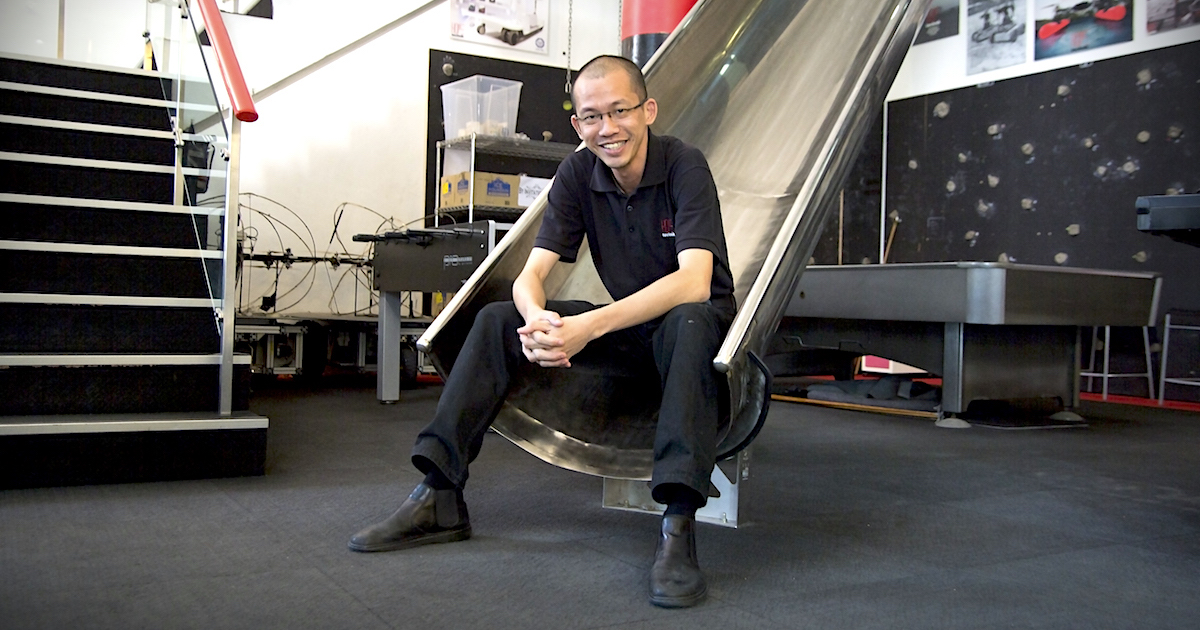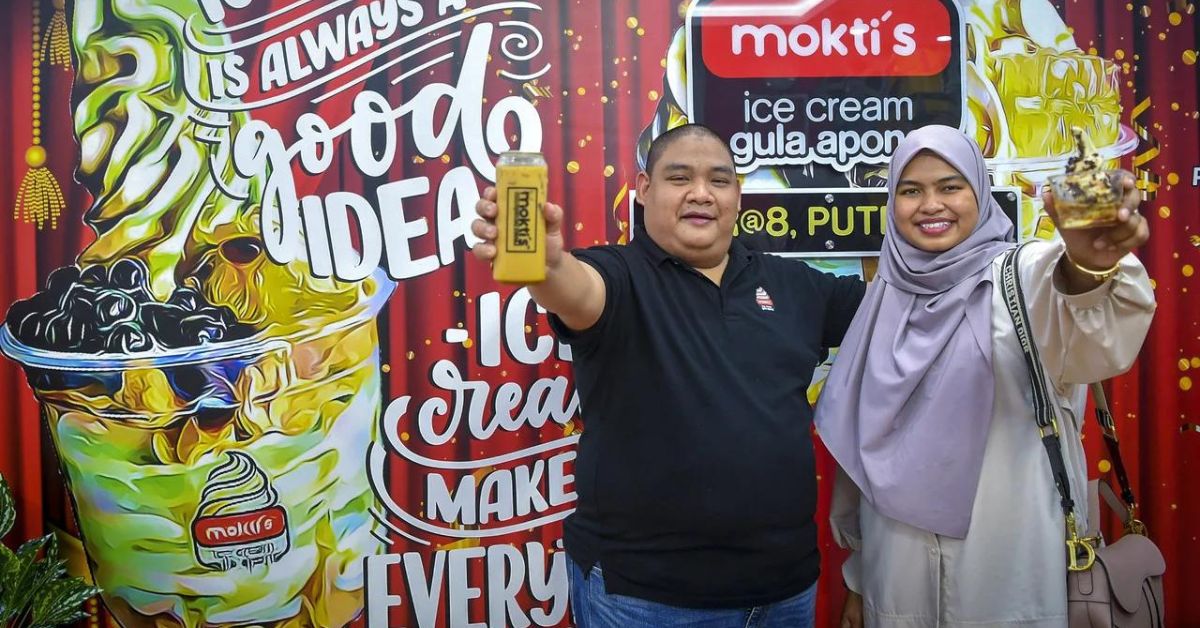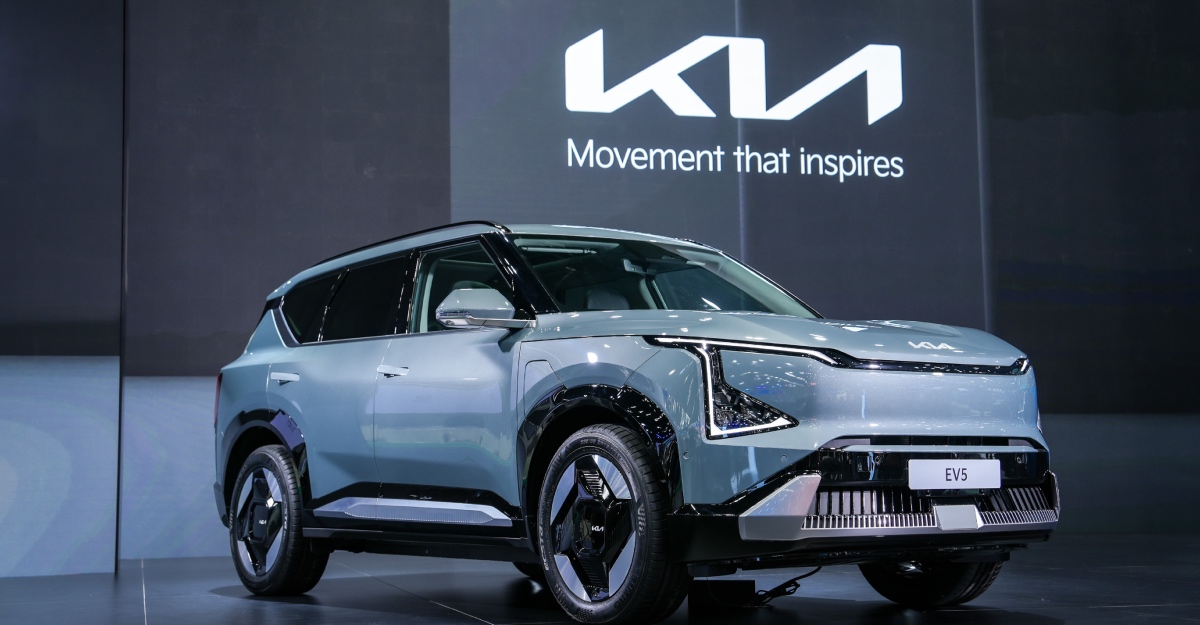During last year’s National Day Rally, Prime Minister Lee Hsien Loong singled out HOPE Technik as a prime example of an SME that is building new capabilities in an economy defined by disruption.
This homegrown engineering firm produces Red Rhinos and hazmat control vehicles for the Singapore Civil Defence Force (SCDF), as well as drones and specialised robots for industrial and commercial purposes.
The company has been very successful so far, delivering over 400 projects across 18 countries to date; but the business didn’t exactly take off on the get-go.
I caught up with Peter Ho, co-founder and CEO of HOPE Technik to hear first-hand from the man himself on how he led his company to success.
Humble Beginnings

HOPE Technik was founded back in May 2006 by Ho and three of his National University of Singapore (NUS) schoolmates – Michael Leong, Ng Kiang Loong, and Jeff Tang.
All four of them represented NUS in Formula SAE and they naturally bonded over a common interest in engineering and race cars.
So it’s of no surprise that when starting up HOPE Technik, they wanted to focus it on motorsports engineering. But as demand for robotics gained traction, the company steered towards that direction instead.
“We pumped in a capital of $10,000 – $2,500 each – to start the business. We were all engineers, so we never particularly understood finance or [business] planning,” said Ho.
“Back then, the market mood was also very different. Startups weren’t a cool word. Startups meant that you weren’t capable enough to find a good job, which is why you are starting something up on your own.”
These obstacles never really daunted him though – if you don’t know things, you simply learn.
The four co-founders picked up business skills and knowledge along the way but admittedly, the learning process wasn’t easy and the young firm struggled to find its footing at first.
It was a very financially and physically exhausting period for them. They racked up credit card debts to pay for equipment, and they couldn’t even afford to hire workers.
They worked long hours without any salary, and this went on for one and a half years before there were finally enough projects pouring in.
The ‘Big Break’
When asked what’s the turning point for the company, Ho said that “securing the SCDF contract was one of the first big breaks for the company.”
SCDF had commissioned them the Red Rhino project in a sub-contract with another company back in 2009, and this helped them “get noticed and opened doors for the company” to sign even more contracts.
HOPE Technik has been building the last four generations of Red Rhinos and it recently unveiled a new SCDF compact hybrid vehicle with firefighting and ambulance facilities, which is among the smallest in Asia.

The company’s projects gained international attention over the years and with the support of the Singapore Economic Development Board, HOPE Technik secured a contract with aviation giant, Airbus Defence and Space.
In 2012, it beat notable engineering firms worldwide to clinch a multimillion-dollar deal with Airbus to build a research prototype plane that can take passengers to the edge of space, 100km above Earth. The spaceplane tests were successfully concluded in May 2014.
Another noteworthy project is a collaboration with Infineon Technologies Asia Pacific to develop a robot, called SESTO Automated Guided Vehicle (AGV), to automate material retrieval and transportation within Infineon’s smart factory in Singapore.

This AGV can perform tasks such as pushing around materials and transporting items from one end of the production floor to the other. It helps to boost productivity, and is safe to use among people as its inbuilt safety features prevent accidents and collisions.
This joint project was named the most technologically disruptive collaboration at this year’s Singapore International Chamber of Commerce (SICC) Awards. It is the first of its kind for assembly manufacturing in Singapore, and it also serves as a key cornerstone towards Singapore’s smart factory journey.
While Ho acknowledges that these few big projects serve as a gateway to other opportunities, he is not particularly concerned with the sheer size of the contract.
What matters more to him is that each project holds a meaning and allows his company to “learn the depth of engineering.”
Innovation Is In The Company’s DNA
HOPE Technik has been making national headlines the past few years for being technologically innovative.
As the firm gains more recognition, Ho realised that innovation is necessary in running any business.
“You have to push the envelope because business and technology are changing so rapidly. This is very much the DNA of the company,” he said.
He also pointed out that most people have a misconception that in order to innovate, one has to create something new.
This is untrue, and a statement of HOPE Technik’s “10 rules of engagement” echoes this: “We do not reinvent the wheel, we adapt and modify proven solutions to give reliable results.”

He added that innovation is not something that can be easily taught. “The attributes and attitudes of pushing the line, those have to be cultured.”
And when you innovate, failure is inevitable so it’s perfectly fine if it doesn’t work out the first time round, he advised.
“There is no hard and fast rule on the number of failures. In order to attain excellence, there must be continuous repeated tries until the success is delivered.”
People Is The Core Of The Company

HOPE Technik has grown from a four-man company in 2006, to a multimillion-dollar group with almost 150 employees today. What contributed to this success?
“The people,” Ho replied, matter-of-factly.
They are the key players in the company as they share the same burden as the founders to keep the company going, said Ho, which is why they are never addressed as “staff” or “colleagues”.
“They’re our teammates because we run side by side,” he added.
So what does HOPE Technik look out for in a teammate? “Passion and commitment”.
While it is difficult to measure passion, Ho uses a person’s knowledge and hobbies as an indicator of whether a potential job candidate will do well at the company.
He reasoned that without true interest, there is no desire to see what the landscape outside is doing; and when it comes to execution, the drive for quality and ability is missing.
“The websites you surf on the weekends, the books you read, the movies you watch – these are all an indication of how ‘nerdy’ you are in this industry,” said Ho.
The company also has a very rigorous hiring process – those who have long resumes of impressive engineering projects don’t really form a strong impression on Ho.
“We don’t believe what we see on paper. You have to prove it before embarking on any commercial projects for the company.”
Specifically, Ho believes in engineers who continuously work on projects on a personal basis and keep creating for the fun of it. Those, he says, are the right breed.
“I don’t want people who come in treating this as their day job – I come in, do my work, knock off at 6, and take my salary. Will that be competitive in today’s landscape? It’s not enough,” he said sternly.
“Engineering is like a religion here. Everyone is independent and professional with their own different points of view of engineering. So when you can find like-minded teammates to join the team, it’s very fun working with them [because we are all on the same page].”
When asked to comment on the engineering job landscape over the years, Ho said that no one was particularly interested in software engineers a few years ago. But fast forward to today, “computer science in school is oversubscribed”.
“The area of specialities in engineering is increasing, and that’s good. This means that we have the mobility to move to any country in the world, and there is also an increasing demand for engineers due to the rise of robotics, Internet of Things, and smart everything.”
He added that the advent of smart technology has opened up more opportunities, rather than ‘stealing’ our jobs.
“Let’s look back at how things have changed over the years. You don’t see people who were horse cart riders still looking for the same job now. Likewise, as cars start coming in at the start of the 20th century, do we still stick to horses as a mode of transport?”
“Changes and challenges are a given, but will people move on with it? Yes.”
We have to learn to evolve with the times, and remember that above all, technology is helping to “value add” to the work that we do and help make our lives better, he reminded.
We cannot go back to the horse-drawn carriage days when cars have been invented; and in the same vein, engineering will help us power what is really needed.
HOPE Technik is constantly expanding and on the lookout for individuals who are passionate about high-performance engineering. Some positions available for hire include mechanical and electrical engineers as well as software architects. Applicants need to have a background in a relevant course, and be armed with good programming or mechanical designing skills. Fresh graduates and interns are welcome too.
Please visit their Career page and engineroom.sg to explore more engineering roles.
This article is written in collaboration with the Singapore Economic Development Board (EDB).
Featured Image Credit: HOPE Technik








